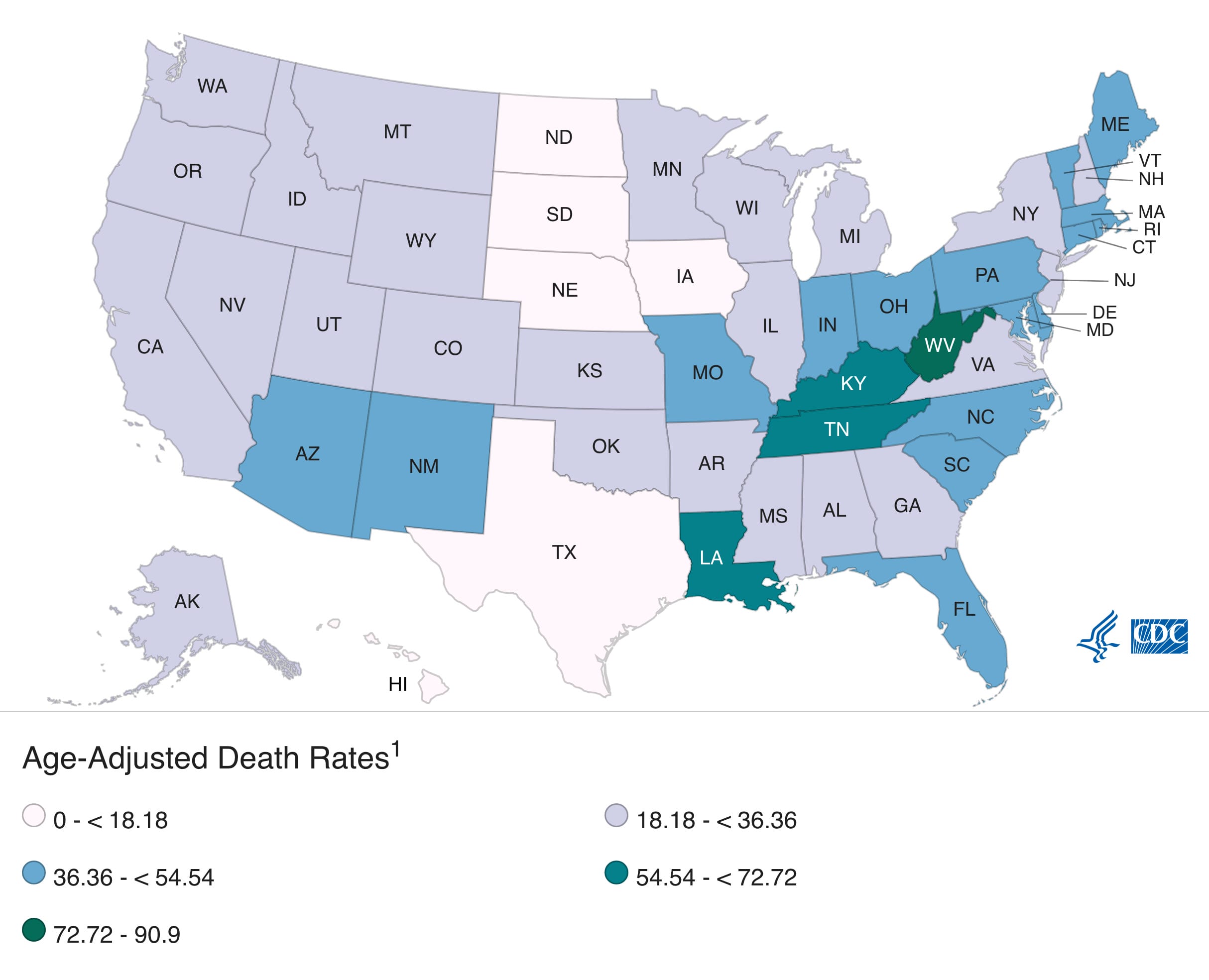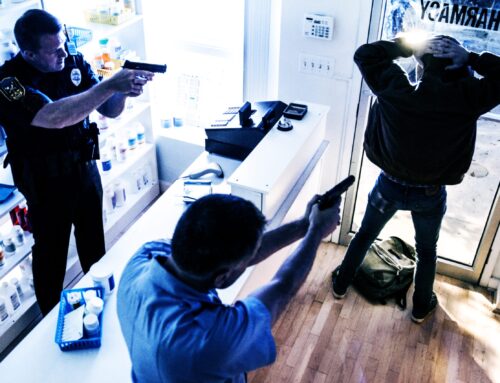How West Virginia Used Criminal Justice Reform to Improve Its Prison System

To combat skyrocketing incarceration rates, West Virginia began implementing an incentive structure wherein inmates could earn time off of their sentences for engaging in drug treatment programs and educational services. The state also passed laws that reduced juvenile incarceration, offered expungement, and implemented cash bail reform.
West Virginia’s Crisis of Incarceration
Of all the states in the U.S., West Virginia has been hit hardest by the opioid epidemic, with the state recording 90.9 drug overdose deaths for every 100,000 residents, the highest rate of fatal overdoses of any state in the nation.1

Drug Overdose Mortality by State. Image Courtesy of CDC.gov
About one in every four West Virginians is addicted to opioids, a crisis-level public health problem that also led to a crisis of incarceration. The state’s prison population grew by 73% between 2000 and 2010, and since 2010, West Virginia has led the nation in annual prison population growth. The tie-in between the state’s skyrocketing incarceration and its drug problem is that 75% of all inmates are serving sentences for drug-related crimes and non-violent possession. From 2000 to 2010, incarcerating drug offenders cost the state $170 million.
Proposed and Implemented Solutions Since 2013
Beginning in 2013, West Virginia legislators began implementing multiple criminal justice reforms, many of which were centered around providing alternatives to incarceration for drug offenders and rehabilitative services for those incarcerated.
The first legislation adopted in West Virginia was Senate Bill 371, signed into law in 2013. The law created an earned-time incentive for non-violent inmates who took part in addiction rehabilitation programs. The law also expanded drug court programs and allocated $2 million in federal grant monies to fund two drug rehab programs.2
In 2015, West Virginia legislators addressed the rise in juvenile incarceration, another problem in the state linked to the drug crisis. Senate Bill 393 was signed into law in that same year. It was designed to keep adolescents close to their families and focused on lowering the juvenile recidivism rate. According to proponents of the legislation, the reform bill will result in 16% fewer young people being incarcerated while simultaneously saving taxpayers $20 million.3
Also in 2015, West Virginia legislators passed House Bill 2604, an expungement bill that allowed ex-offenders convicted of non-violent crimes to have their criminal records expunged, thus making it easier for them to pursue employment opportunities.4
In 2020, West Virginia passed House Bill 2419, a bail reform law. The law has language that allows for releasing pre-trial inmates accused of misdemeanor crimes (like drug possession). With this legislation, West Virginians accused of drug possession will not have to remain in pre-trial detention for extended periods simply because they can’t make bail.5
Providing Rehabilitation Options for People Who Are Addicted to Drugs
Initial reports following West Virginia’s slew of criminal justice reforms suggest optimism is warranted. In recent years, West Virginia was able to reduce its overdose rate and its rate of drug-related arrests, though the rates in the Mountain State are still higher than most other states.
One of the beneficial results of the reforms has been a drop in recidivism, i.e., fewer former offenders are committing new crimes and thus become re-incarcerated. For example, according to a press release published by the West Virginia Department of Homeland Security, the Mountain State has one of the lowest recidivism rates in the country, at just 26.8%. To put that into context, only Oregon (22.8%), Wyoming (24.8%), and Oklahoma (26.4%) have lower recidivism rates than West Virginia.6

West Virginia’s offering of several alternatives to incarceration and treatment-based programs to people with an addiction has helped slow its incarceration and overdose rates. These results are beneficial to local taxpayers and West Virginian communities. Some of these programs have included HELP4WV and Prevention First WV, which provide resources for those struggling with drug addiction. Crime experts in West Virginia believe that, since many forms of crime are associated with substance abuse and addiction, “…if we could eliminate drug abuse, there would be a reduction in property crimes like robberies, burglaries, and some violent crimes.” It is safe to expect conditions in West Virginia to improve as long as the state continues to prioritize and incentivize treatment for non-violent drug offenders as preferential over incarceration.7
Sources Cited:
- CDC. “Drug Overdose Mortality by State.” Centers for Disease Control and Prevention, 2021. cdc.gov
- WVL. “Senate Bill No. 371.” West Virginia Legislature, 2013. wvlegislature.gov
- WVL. “Senate Bill No. 393.” West Virginia Legislature, 2015. wvlegislature.gov
- WVL. “H.B. 2604.” West Virginia Legislature, 2015. wvlegislature.gov
- Legiscan. “West Virginia House Bill 2419.” Legiscan, 2020. legiscan.com
- WVDOS. “Inmate Recidivism Rate in West Virginia Fourth Lowest in the Country.” West Virginia Department of Homeland Security, 2023. dhs.wv.gov
- ORSP. “An Analysis of Crime Rates in West Virginia, 2015- 2019.” West Virginia Office of Research and Strategic Planning, 2020. das.wv.gov




